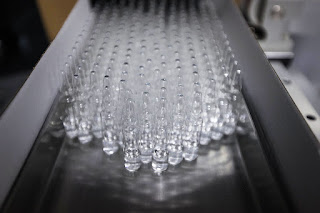On 16 March 2020, the porter of the red brick building in Queens finally called the police. Tenants were complaining of a strange stench from the fifth floor. It came from the apartment of Ellen Torron, a petite 74-year-old with short gray hair and piercing dark brown eyes. She lived alone in the building for more than twenty years. She wore gloves even before the pandemic.
At around 2 pm, the police broke in. The 800 sq feet
studio apartment was full of books, magazines, paperwork boxes, suitcases. On
the flat screen television, a cable channel was on. Unopened letters lay at the
door. Through the hundreds of things, the police made their way to the
bathroom. In the bathtub, they found Ellen’s body under water. She had been dead
for quite some time. No signs of struggle or injury, foul play was ruled out.
Once the porter identified the body, it was put in a body bag, and carried to
the morgue at the Queens Hospital Center.
*****
Neither the porter nor the neighbours knew of Ellen’s
family. Nobody came forward to claim her remains. By now, cases and lockdowns had
overwhelmed the authorities. Investigators couldn’t return to her house to look
for a will, savings or evidence of a burial plot. Her body lay inside a refrigerated
drawer for 24 days. Autopsy gave the cause of death as cardiovascular disease.
The pathologist couldn’t determine if she had contracted covid or not. New York
city’s death toll had passed 27000. There were far more corpses than morgues
could hold.
Early in the morning on 9 April, a white truck
carrying 24 pine boxes was rolled onto a ferry for a ten-minute voyage to Hart
Island. One of the pine boxes had Ellen Torron lying in it. The pine boxes
would have a mass burial at America’s biggest public graveyard.
Isn’t cremation a more sensible option, when all
systems are overwhelmed? “What if someone is sent by mistake?” answers Captain
Thompson, in charge of the operations on Hart island for the last fifteen
years. “You can’t reverse a cremation”.
When Ellen arrived, the rate of burials at the island
had gone up from 25 a week to 25 a day. The mass grave trench was supposed to
last for a year, instead it was full within two months.
*****
Captain Thompson was right, cremation is irreversible,
burial is not.
On 26 June, two and a half months after Ellen Torren
was buried, a black van arrived. James Donofrio, 61, stepped out, and handed
the necessary paperwork to Captain Thompson. It showed he was authorized to
take custody of Ellen’s exhumed coffin.
Fifteen workers began digging. In a football field
size pit, 1165 identical pine caskets were stacked three high, two wide. The men
in the Hazmat suits were given the task of digging up casket no. 40-3. Masks on
their face, shovels in gloved hands, they climbed ten feet down. The numbers
are engraved at a corner of the pine boxes. After a search, the casket 40-3 was
retrieved and along with its occupant brought back aboveground.
*****
City investigators couldn’t revisit Ellen’s apartment,
but discovered her birth certificate. It showed she was born at the Jewish
maternity hospital in Manhattan. Hebrew Free Burial Association (HFBA) is a 132-year-old
nonprofit organization that offers free burials for Jews.
James Donofrio was sent by that association to recover
Ellen Torron’s body. He had come prepared. To guard against the stench, he had
brought a second large casket that would take the pine box in. Between the two
caskets Donofrio generously spread packets of espresso coffee. Espresso can
kill any odors.
Once the twin coffin was loaded into the van, Donofrio
left for the opposite side of the city to bury Ellen Torron for the second
time.
*****
(Continued tomorrow)
Ravi









